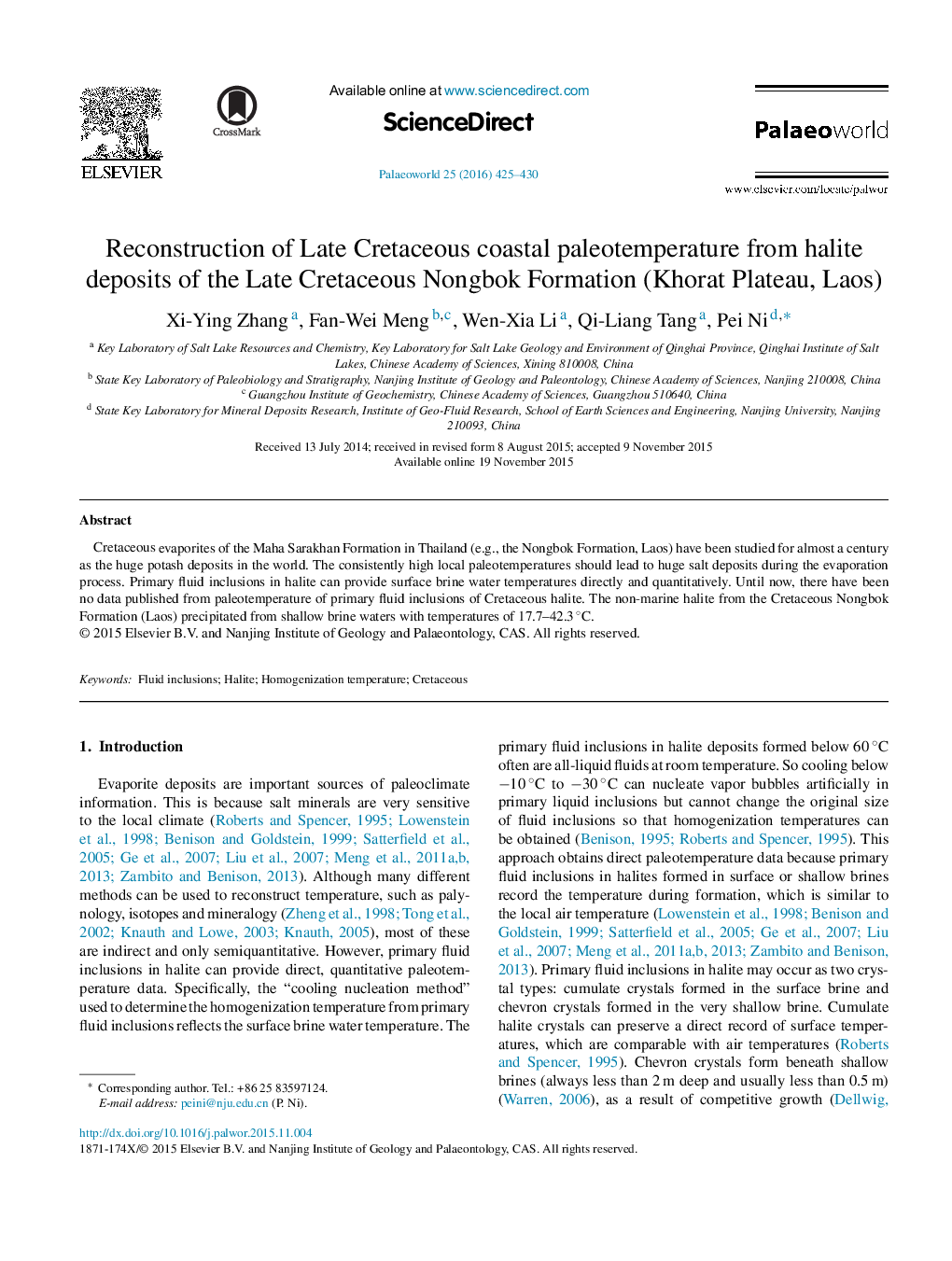| Article ID | Journal | Published Year | Pages | File Type |
|---|---|---|---|---|
| 4749599 | Palaeoworld | 2016 | 6 Pages |
Abstract
Cretaceous evaporites of the Maha Sarakhan Formation in Thailand (e.g., the Nongbok Formation, Laos) have been studied for almost a century as the huge potash deposits in the world. The consistently high local paleotemperatures should lead to huge salt deposits during the evaporation process. Primary fluid inclusions in halite can provide surface brine water temperatures directly and quantitatively. Until now, there have been no data published from paleotemperature of primary fluid inclusions of Cretaceous halite. The non-marine halite from the Cretaceous Nongbok Formation (Laos) precipitated from shallow brine waters with temperatures of 17.7–42.3 °C.
Related Topics
Physical Sciences and Engineering
Earth and Planetary Sciences
Palaeontology
Authors
Xi-Ying Zhang, Fan-Wei Meng, Wen-Xia Li, Qi-Liang Tang, Pei Ni,
